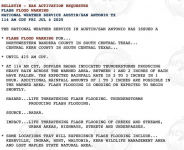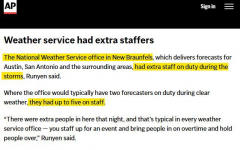Are you trying to say that as the planet gets warmer, biodiversity goes down? As the temperature rises, there will be less species on the planet?
Because when I look around me, life tends to thrive with heat.
What I am saying when we lose forest , rain forests , green space (trees , grass, weeds, ) anything that removes Co2 and replace these areas with new homes, businesses buildings, concrete, asphalt, temperature tends to go up.
Reduced Absorption & Increased Emissions:
- Forests and rainforests are vital carbon sinks, meaning they absorb large amounts of carbon dioxide (CO2) from the atmosphere through photosynthesis and store it in their biomass (trees, roots, leaves) and soils.
- When trees are cut down, they stop absorbing CO2.
- Furthermore, when deforested trees are burned or decompose, the stored carbon is released back into the atmosphere, primarily as CO2. This creates a "double whammy" effect – less CO2 is being removed, and more is being released.
2. Impact on Global Carbon Fluxes:
- Between 2001 and 2019, forests absorbed roughly twice as much CO2 as they emitted.
- Specifically, forests absorbed around 16 billion metric tonnes of CO2 per year, while deforestation and other disturbances released an average of 8.1 billion metric tonnes annually.
- This meant that forests provided a net carbon sink of about 7.6 billion metric tonnes of CO2 per year during that period.
- The net effect of tree cover loss is that some of this CO2 removal capacity is lost.
3. Turning Carbon Sinks into Sources:
- In some regions, like Southeast Asia, tropical rainforests have already become a net source of CO2 emissions due to deforestation.
- In the Amazon, deforestation and warming are causing parts of the forest to transition from a carbon sink to a carbon source.
- Between 2015 and 2017, tropical forest loss worldwide released 10 billion tonnes of CO2, almost 10% of annual human CO2 emissions.
4. Additional Factors Reducing Carbon Removal:
- Forest degradation, which affects the structure and function of forests without decreasing their area, also contributes to reduced carbon sequestration.
- Deforestation-induced climate change leads to regional warming and drying, further reducing the carbon storage capacity of remaining forests and making them more vulnerable to fires.
In summary, deforestation directly reduces the amount of CO2 removed from the atmosphere by eliminating trees that would otherwise absorb it. Furthermore, it releases stored carbon, adding to the problem. This can lead to significant reductions in forests' capacity to act as a carbon sink and, in some cases, can turn them into net carbon sources.




